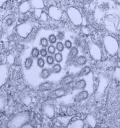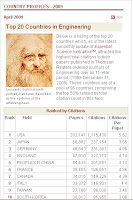
Have you read this?
Better late than never—for a summary of our 2nd Science Libraries book discussion, held Feb. 19, 2009 in the Engineering & Science Library.
Genetic Witness: Science, Law, and Controversy in the Making of DNA Profiling was written by Carnegie Mellon Prof. Jay D. Aronson.
Prof. Aronson graciously came to the second half of our discussion.
If you haven’t read the book yet, why not take it to the beach with you? Hunt Library has a print copy and the Engineering & Science Library has a copy on our Kindle. You can check out the Kindle for 15 days.
Test your knowledge of terms used in the book by trying out the
glossary puzzle. Contact
Donna Beck, Engineering Librarian for the answer key.
The book details the concerns with the use of DNA profiling since its 1987 introduction in the courtroom. DNA analysis was examined by courts to see if it had acceptance by the greater scientific community. Private labs in their defense of the new technology argued that if a problem was encountered, no results would be obtained, not wrong results.
The book has all the elements to promote discussions of the interaction between emerging technologies and their applications in our legal system.
“
DNA fingerprint” as a term was purposely chosen to explain the process for the lay person’s understanding. Aronson credits defense attorneys for revealing problems in the use of DNA evidence.
“
Who has the authority to effectively regulate forensic DNA analysis?” At the time of the book’s publication, the author states that, “No agreed upon method to estimate frequency of errors in DNA testing existed or exists.”
Coincidentally, the day before our book discussion—the National Academy of Sciences (NAS) came out with a report (February 18, 2009) recommending a third party—to be known as the National Institute of Forensic Science— have the responsibility of developing standards. Jay Aronson suggested to us that any methodological errors would be viewed by NAS as a “passing thing”—therefore, no one would be charged with going back to review evidence from the past that may not have been sound.
Prof. Aronson emphasized that he did not want his book to take on DNA testing as the problem, but rather the system surrounding its development, implementation, and review as a standard. When asked if he met resistance during his research, he had one person from the FBI that simply never responded to his requests. Otherwise, he received encouragement from others with whom he had interactions.
Idea for the book: developed from a discussion with Dick Lewontin, a geneticist who was involved with the Yee case. Lewontin provided all the documentation to Aronson. Because these documents were used in court, they were in a sense a “public” record. Aronson commented, though, on the “necessity of trust” that he received when reviewing such collections of documents. So far, Prof. Aronson notes that he’s had no backlash from reviewers.
Reviews:Nature Genetics 40, 3-3 (31 December 2007) doi:10.1038/ng0108-3.
We subscribe to this journal. If you go to our library homepage at
search.library.cmu.edu, you can find
Nature Genetics on our
“
eJournals A-Z” link.
For another review, see:
American Journal of Human Genetics (“DNA Wars, Part 1”) available free from
PubMed CentralSpecial thanks to our Engineering & Science Library’s Information Assistant, Bo Baker for taking notes during our discussion.




















